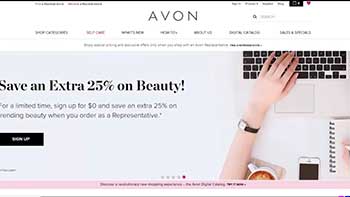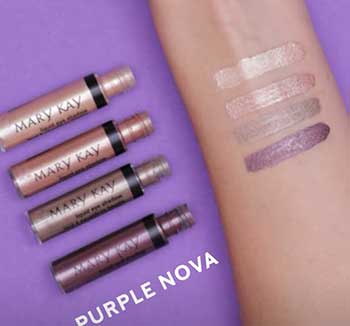When it comes to big names in cosmetics, Avon and Mary Kay are two powerhouse brands that have been around for decades. Both utilize a direct sales model, relying on independent consultants to sell their products directly to customers.
But which one reigns supreme? Here’s an in-depth look at the pros and cons of Avon and Mary Kay to help you decide.
A Brief Comparison Table
| Category | Avon | Mary Kay |
| Year Founded | 1886 | 1963 |
| Founder | David H. McConnell | Mary Kay Ash |
| Startup Costs | None | $100 for starter kit |
| Product Positioning | Mass market | Premium |
| Price Range | $2 – $40 | $10 – $100 |
| Top Products | Color cosmetics, fragrance | Skincare, anti-aging |
| Sales Model | Catalog, online, parties | In-home parties, personal websites |
| Commission Structure | Earned on sales, no monthly minimum | Minimum monthly purchase to qualify, instant payout |
| Brand Image | Girl next door, community | Glamour, luxury rewards |
| Major Perks | Vacations, jewelry, electronics | Pink cars, watches, trips |
| Revenue (2021) | $5.3 billion | $2.3 billion |
Brief History of Avon and Mary Kay

Avon was founded in 1886 as the California Perfume Company by David H. McConnell. Initially selling perfumes door to door, Avon expanded its catalog to include makeup and skincare products for women in the 1920s and 1930s. The company adopted the Avon name in 1939.
Mary Kay was founded much later in 1963 by Mary Kay Ash. After spending 25 years in direct sales, Ash started her own company with the goal of empowering women and offering them an opportunity for financial independence through direct sales. The company’s first product lineup focused on skincare.
So, while Avon has been around longer, Mary Kay also has decades of experience in direct sales cosmetics. Both companies were revolutionary in their use of female sales representatives and in offering products directly tailored to women.
Business Model
The direct selling approach is key to both Avon and Mary Kay’s business models. Independent sales representatives, primarily women, sell products door-to-door, through home parties/events, and online. Avon refers to its reps as “Beauty Advisors,” while Mary Kay calls them “Independent Beauty Consultants.”
This model allows the companies to reach customers without a physical store presence. Consultants buy products at a discount and sell them at a markup. Profits come from the price difference. There’s also an emphasis on recruitment, as building a team of new representatives called a “downline” can increase earnings.
The main difference lies in startup costs. To become a Mary Kay rep requires an investment of around $100 for a starter kit of products. Avon has no kit requirement, making it more accessible for those with limited funds.
Also Read: Is Vaseline Blue Seal Better Than Original?
Product Offerings and Innovation
Avon is best known for its affordable cosmetics, fragrances, and personal care items marketed to the mass market. Top categories include color cosmetics like lipstick, mascara and powders, skincare and bath products. The company prides itself on offering the latest beauty innovations at reasonable prices. For example, Avon claims to have created the first mass market soft-sculpt lipstick in the 1970s.

Mary Kay also offers color cosmetics, skincare and fragrances, but at slightly higher price points given its premium positioning. Mary Kay invests heavily in research, focusing on products for aging skin and conditions like acne. Notable innovations include the TimeWise skincare line with patent-pending ingredients, and the Volu-Firm line to combat sagging skin. Limited edition products and new launch excitement also help drive sales.
In terms of breadth and affordability, Avon likely has an edge. But for anti-aging and specialty skincare, Mary Kay is tough to beat.
Brand Image
Avon adopted the tagline “The Company for Women” in the 1950s, helping it to align with women’s empowerment. The company has longstanding associations with causes like breast cancer research and domestic violence prevention. Its image is focused on female friendship and community.
Mary Kay also centers its brand around female empowerment, independence and recognition. The signature pink Cadillacs earned by top sellers represent success. Compared to Avon’s girl next door vibe, Mary Kay projects more glamour. This can translate to broader appeal, though its higher prices may be a turnoff for some.
Sales and Marketing Approach
Avon utilizes catalogs, digital marketing and social media to promote its products. Consultants take orders and deliver products. Home parties remain a core sales method, allowing women to try out products with friends.
Mary Kay also uses parties and consultants to demonstrate and sell products. Online ordering is available, but not heavily pushed. Consultants are encouraged to build personal websites and Facebook business pages. There is a stronger emphasis on leveraging consultant relationships versus passive ecommerce sales.
This personal touch helps drive sales for both companies. But Avon’s greater digital focus gives it an edge with younger demographics.
Compensation and Perks
Both Avon and Mary Kay incentivize consultants via commissions on sales, rewards programs, and contests. The more you sell, the more you earn. Top sellers get perks like all-expenses paid trips and exclusive product gifts.
Mary Kay awards the iconic pink Cadillacs, Rolex watches and other luxury prizes. Avon incentives include vacations, electronics, custom jewelry and cash bonuses. Their compensation structures are fairly similar, encouraging friendly competition among sellers.
The main difference is that Mary Kay requires minimum purchase volumes each month to remain active and qualify for commissions. With Avon, there are no monthly quotas.
Also Read: Comparison Between WowCombo and Thrive Mascaras
Pros and Cons of Avon and Mary Kay
Avon
Pros
- Low startup costs
- No monthly purchase requirements
- Wide range of affordable products
- Advanced digital capabilities and online sales
Cons
- Less glamorous brand image
- Fewer anti-aging/specialty items
- Commissions can take 3-4 weeks
Mary Kay
Pros
- Premium brand image
- Innovative skincare products
- Lucrative rewards program
- Instant online commissions
Cons
- Higher buy-in and startup costs
- Monthly purchase minimums
- Smaller product selection
- Less focus on digital sales
So, weighing it out, Avon has the advantage if you’re looking for an easy entrance into direct sales and trendy mass market products to sell. Mary Kay is a better fit if you want to focus on skincare, motivate sales teams with luxury prizes, and instant payout.
Also watch the video!
Frequently Asked Questions (FAQ)
Avon is the larger company in terms of annual revenues. For 2021, Avon reported $5.3 billion in total revenue globally compared to $2.3 billion for Mary Kay. Avon has also maintained steady sales for the past decade while Mary Kay has seen some declines.
No, Avon and Mary Kay are completely separate companies and competitors within the beauty industry. They utilize similar direct sales models but were founded decades apart from each other and have always been independent businesses.
No, Avon was actually founded much earlier in 1886 versus Mary Kay which started in 1963. Avon helped pioneer the concept of direct sales for cosmetics. Mary Kay Ash drew inspiration from Avon’s model when she founded her own company years later.
Mary Kay is considered one of the top skincare brands in the direct sales space along with rivals like Rodan + Fields and NuSkin. Its anti-aging products in particular get high marks for innovation and effectiveness.
However, Mary Kay would rank below prescription brands and prestige luxury brands like LaMer in the global skincare market.
Also Read: Is Mary Kay Better Than Rodan + Fields?
Conclusion
In summary, both Avon and Mary Kay built empires by empowering women through entrepreneurial opportunity and quality beauty products. While Avon may have the scale advantage, Mary Kay remains a heavy hitter with its skincare expertise and alluring brand image.
The ideal choice comes down to your sales style and what types of products excite you most. With some hustle and grit, success can come your way whether you choose the Avon or Mary Kay opportunity.
